BFG - Tax free cars
Here’s my experience of tax and duty-free car purchases when I was posted to JHQ Rheindahlen in the early 1970’s
I was vaguely aware of the tax and duty-free shopping privileges available in Germany, but decided I’d make use of the UK’s Personal Export Scheme to buy a new car before I departed for Germany, so I sold my trusty Ford Anglia to a neighbour and with the proceeds had enough cash to put towards a new car.
At the time (late 1971) I wasn’t totally au-fait with the car purchase situation for Germany so was tempted enough to take advantage of the UK’s Personal Export Scheme whereby one bought a car in the UK without Purchase Tax provided one exported it permanently within a certain time (about three months I think) after purchase. With a young family and having examined the market and taken advice from friends, a new Austin Maxi 1750cc with rear seats that folded down to a bed seemed to be an ideal family car. So I went ahead and purchased a new Maxi as a personal export vehicle, paying the princely sum of £837 pounds i.e. UK price less Purchase Tax. I exported it in January 1971 and this car served me and the family well for our initial two years in Germany, but in 1974 knowing I’d be returning to the UK in mid-1975 decided that a new and up-market car at a BFG Tax and Duty free price would be a sensible long-term choice — the only stipulation to importing into the UK at the end of one’s tour without paying tax etc. was that it had to be registered in one’s name and be more than one-year old. No problems with this, as when I returned to the UK a year later I would meet these HM Customs’ requirements, and so it was.
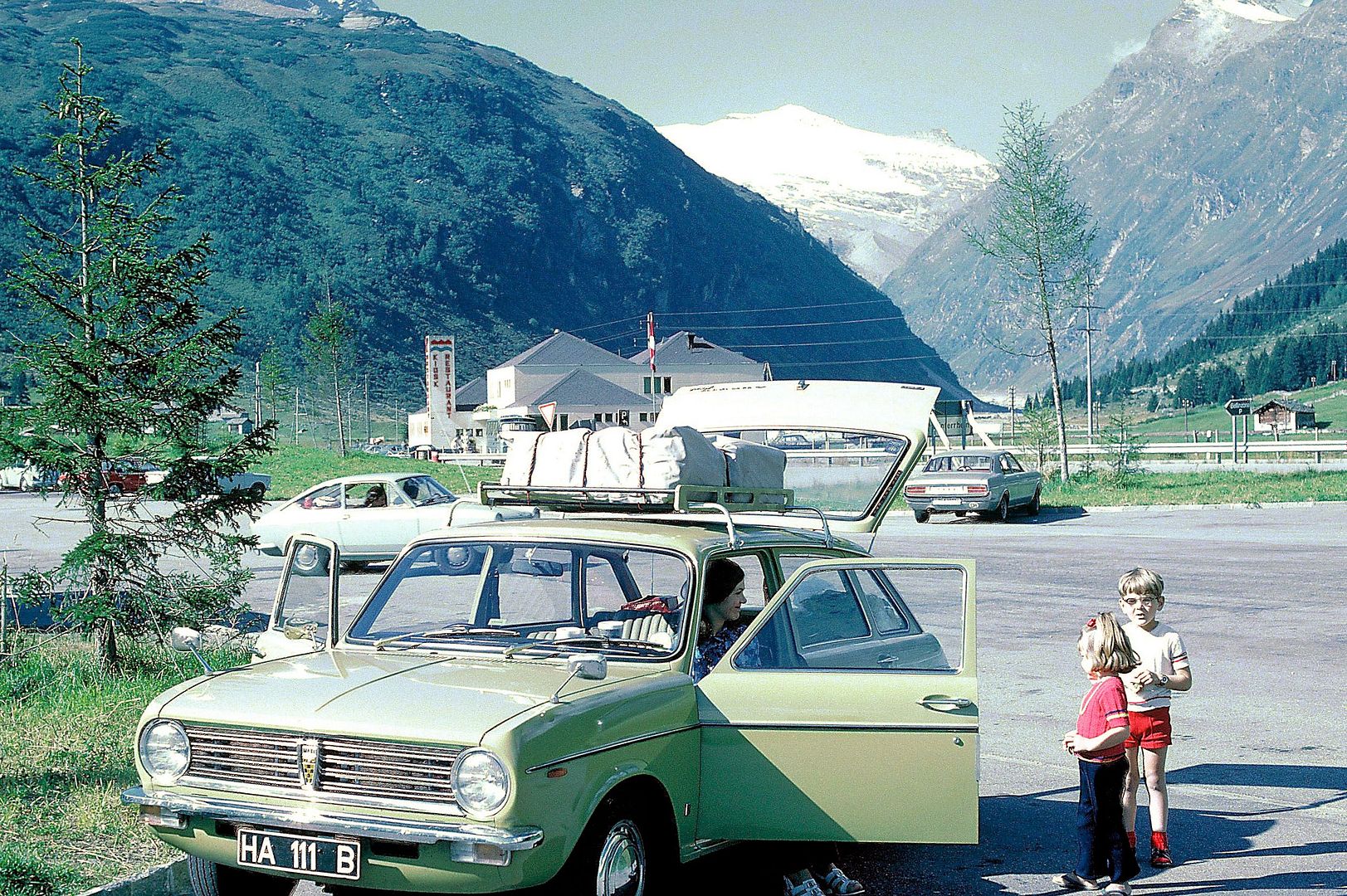
Maxi with family en-route to Italy 1972 - taking a break near the San Bernardino pass in Switzerland
At Rheindahlen one was spoilt for choice when buying a new car as on Saturdays the environs of the JHQ NAAFI and the car park outside were filled with a plethora of car dealers all after one’s custom.
Having taken to camping in a big way in the first two years of our tour in Germany, an estate car with plenty of room would tick all the boxes, so I arranged a test drive of a Volvo estate. The dealer was very generous and allowed one to drive around for half-a-day — and I was hooked. A Volvo 145 Estate it was to be. Altogether it cost me the equivalent to £1,300 sterling.
Despite the relatively low price, all car prices whether British, German and French or others included a “delivery” charge and for Volvos from Sweden to Germany the delivery charges were a bit on the steep side. After forty-years I can’t remember exactly what it was, but the dealer did suggest an alternative where one could take personal delivery at Volvo’s plant in Gothenburg in Sweden. Having done the sums it was clear that the cost of a railway journey from Moenchengladbach to Gothenburg plus the cost of a hotel and fuel for the return would be cheaper than paying the relatively steep “delivery charge”. So I opted for a “personal” collection from Volvo in Sweden. This was a relatively simple process. I paid a deposit to the dealer and he placed the order with Volvo. All that was necessary then was to get a bankers draft payable to Volvo for the balance from the bank where I banked in Germany (Rheindahlen’s Commerzbank). A copy of the BFG registration document as arranged in advance with the BFG licensing authorities, a green (insurance) card, BFG number plates, a GB sticker and that was it.
The train journey from Moenchengladbach was via Hamburg (change), Copenhagen (change) and then direct to Gothenburg. The timetable showed I could leave Moenchengladbach in the evening, change late at night at Hamburg and catch the overnight train to Denmark arriving at Copenhagen very early in the morning. At Copenhagen one caught the first early morning train to Gothenburg. In those days international trains were conveyed by the ferry across the water, the passenger railway carriages were driven onto the ferry and driven off at the destination terminal, a new locomotive was attached and the journey continued to the destination. There was no way, except in an emergency of getting off the carriage whilst it was on the ferry, just stay in the carriage for the ferry crossing and it all worked well.
The journey from Germany to Sweden involved two sea crossings: The first from Hamburg to Copenhagen was the Puttgarden (Germany) and Røby (Denmark) ferry, the second from Copenhagen to Gothenburg with the ferry over the Øresund from Kronborg (Helsingør) in Denmark to Helsingborg in Sweden.
The Hamburg – Copenhagen train was overnight in a carriage with couchettes. The journey was relatively short and although the train arrived in Copenhagen at about 05.00, one was allowed to stay in the carriage until about 06.30 or so which allowed for breakfast in the station buffet before boarding the onward connection for Gothenburg in Sweden that left at 07.34.
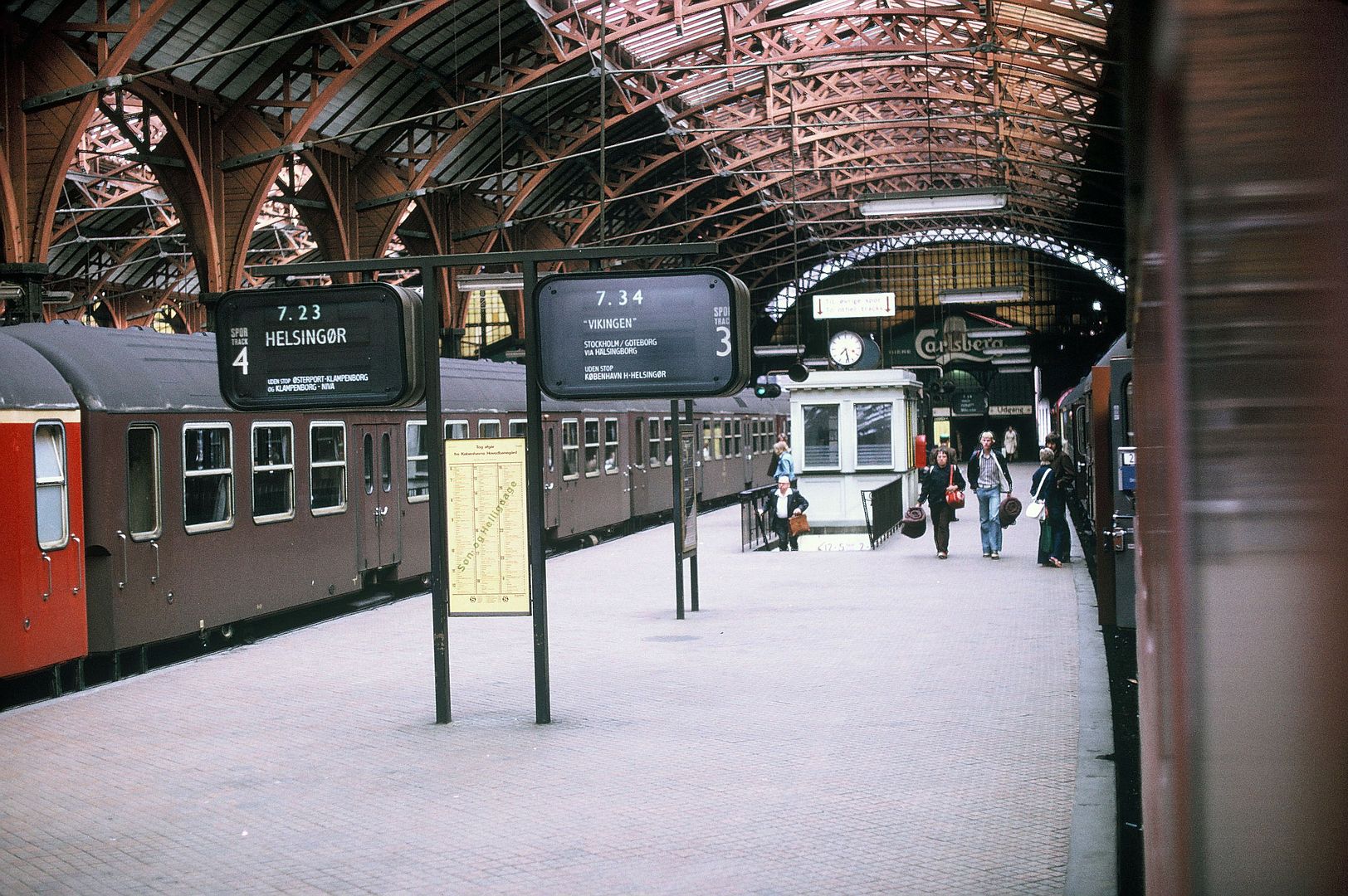
This shows the 07:34 Stockholm and Gothenburg train (“The Vikingen”) waiting at Copenhagen to depart for Gothenburg.
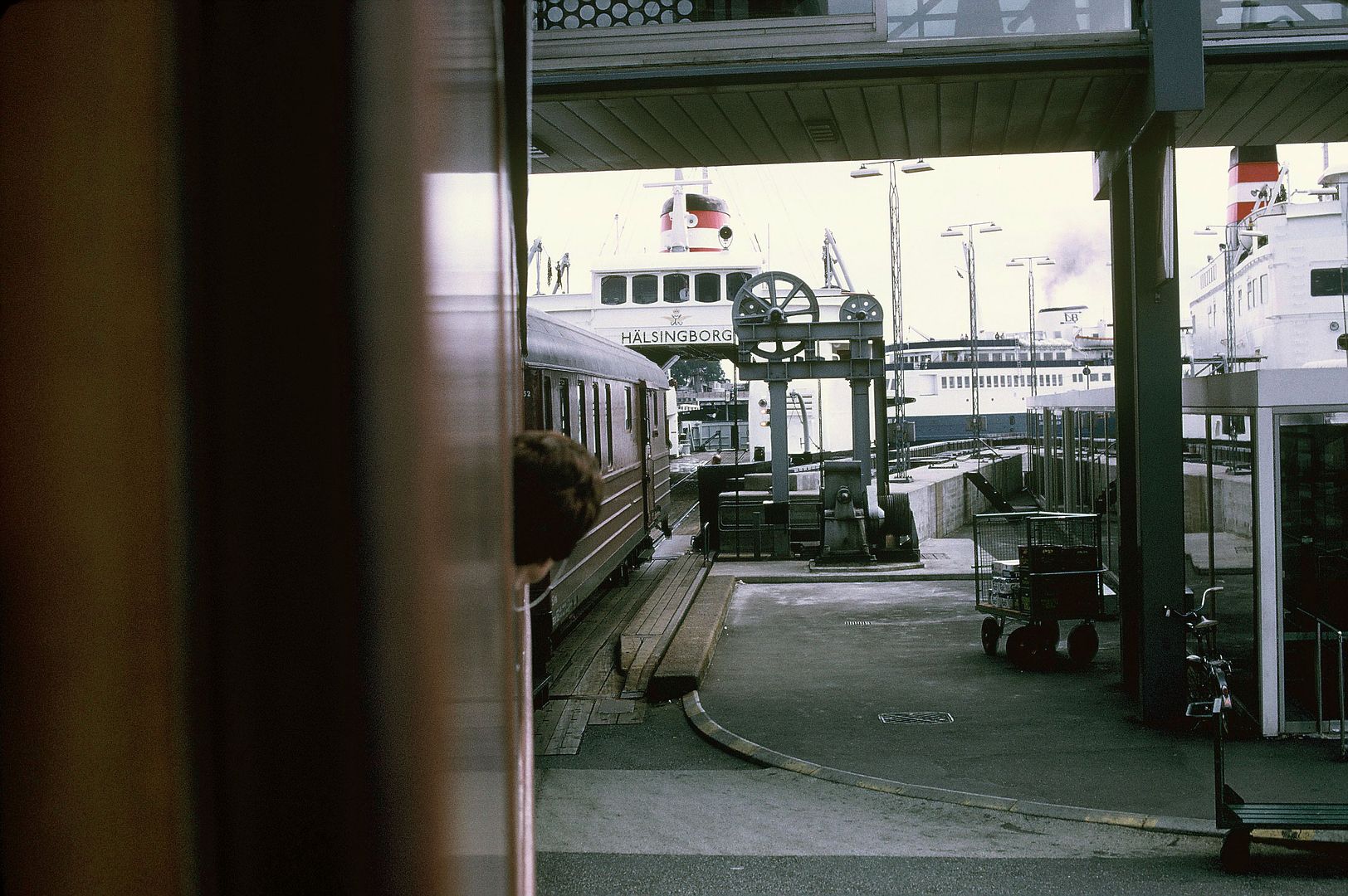
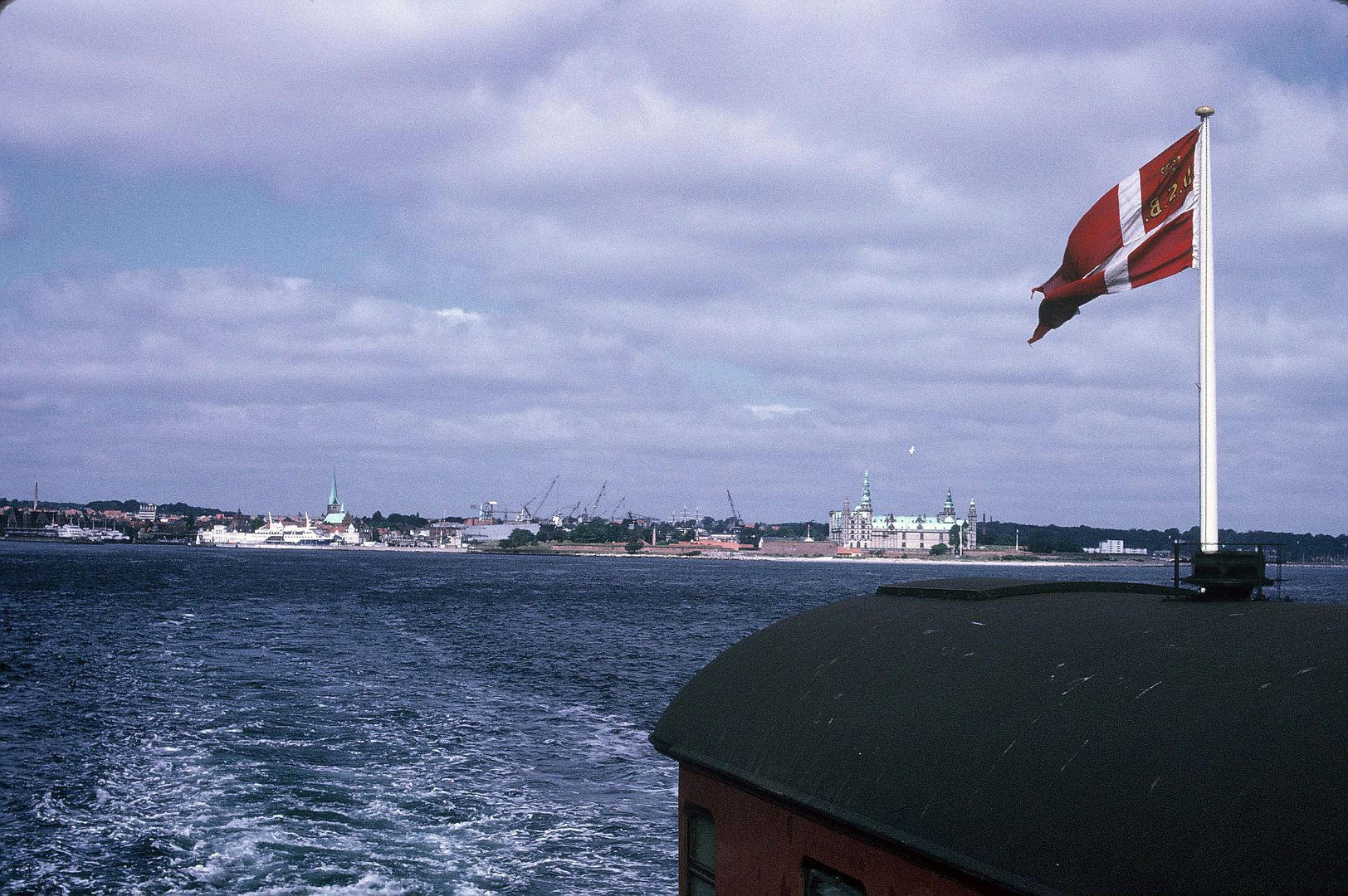
The ferry on the Øresund from Kronborg (Helsingør) in Denmark to Helsingborg in Sweden (with Hamlet's castle in the background)
I’d been instructed to ring Volvo’s Tourist Delivery Centre when the train arrived at Gothenburg and they responded by sending a car to collect me from the station and take me to Volvo’s Tourist Delivery Centre. Volvo’s delivery service worked well and the formalities were dealt with efficiently.
The banker’s draft was handed over, documents checked etc. and the BFG number plates and GB sticker affixed. This took a little while but the icing on the cake, and totally unexpected was that Volvo had arranged a free overnight stay in a Gothenburg hotel which allowed for a bit of sightseeing and the chance to have a good Swedish meal (with fish of course!). So the next day after an early breakfast I departed Gothenburg south towards Copenhagen (200-miles) my next planned night stop.
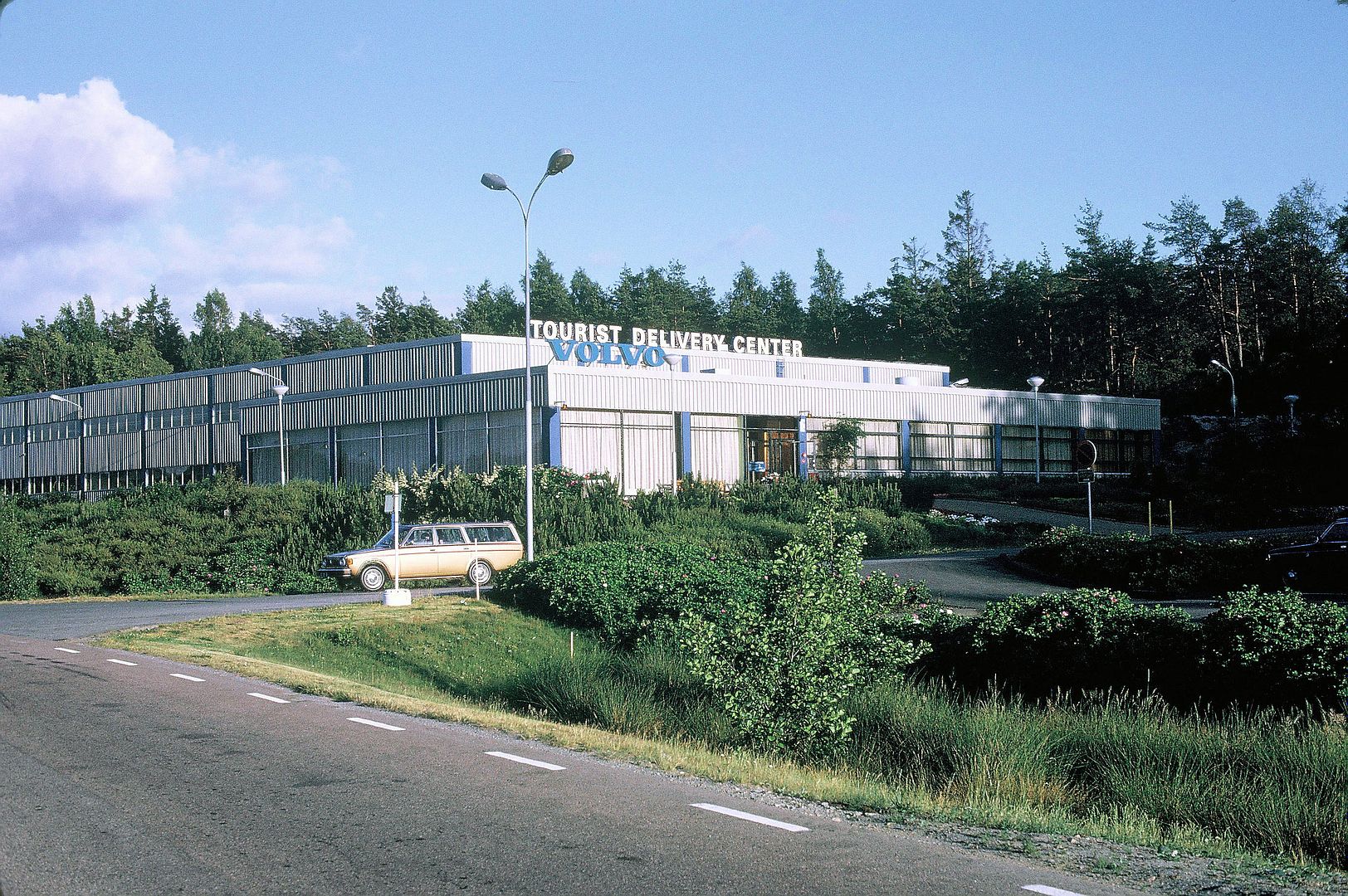
Taking delivery of my new Volvo at the Volvo Tourist Delivery Centre.
I took delivery in June. The weather was absolutely gorgeous and being mid-summer I was pleasantly surprised by the strong sunlight and almost Mediterranean look of the Kattegat as I travelled south down the west coast of Sweden to Helsingborg to take the car-ferry back over the Øresund to Helsingør in Denmark.
The west coast of Sweden had absolutely stunning scenery as seen below
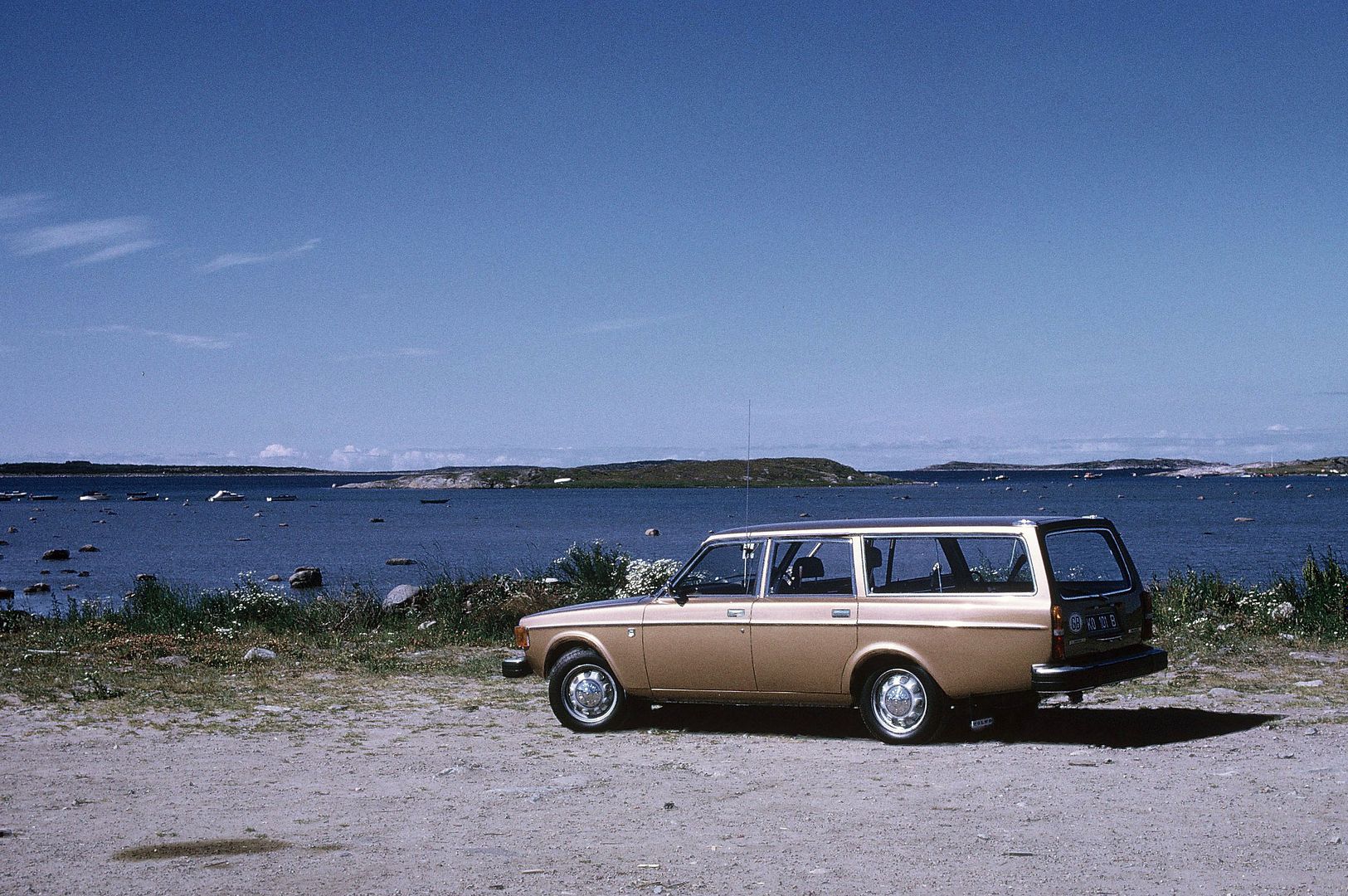

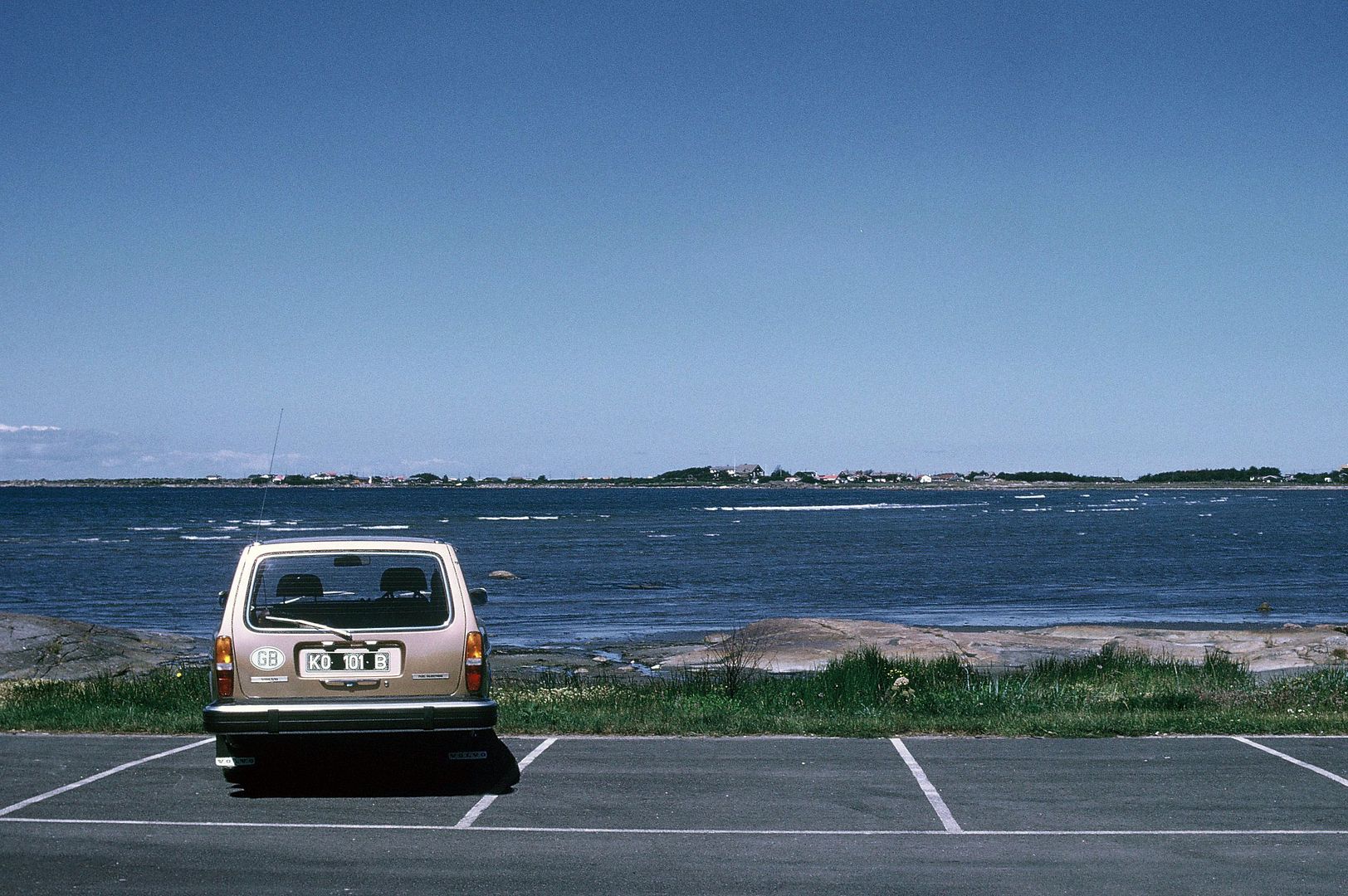
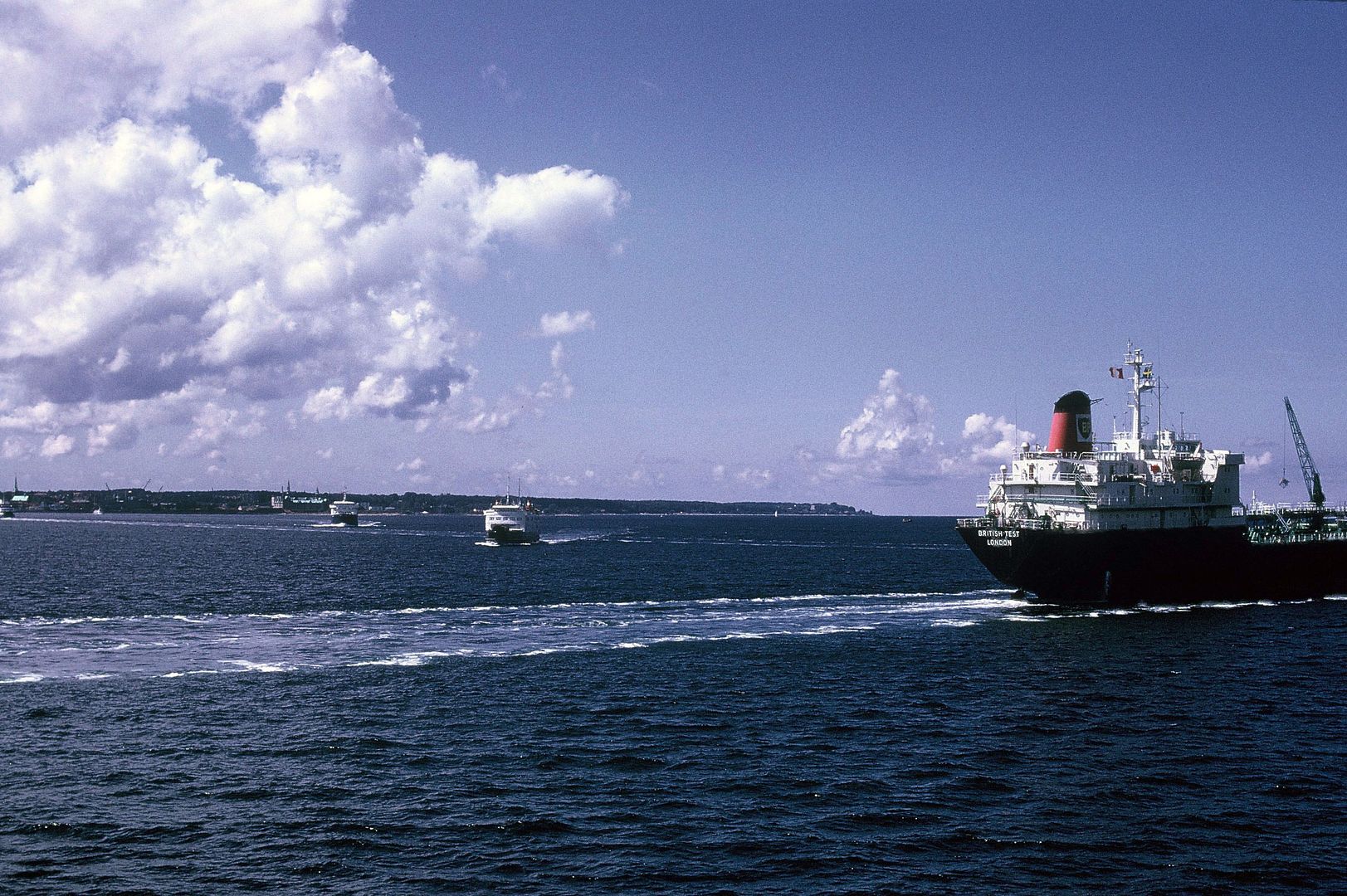
In 1974 the Sweden to Denmark ferries over the Øresund were reputed to be the busiest in the world, probably right as my photo shows.